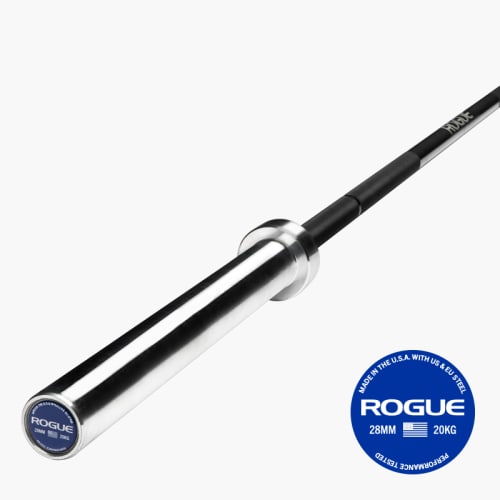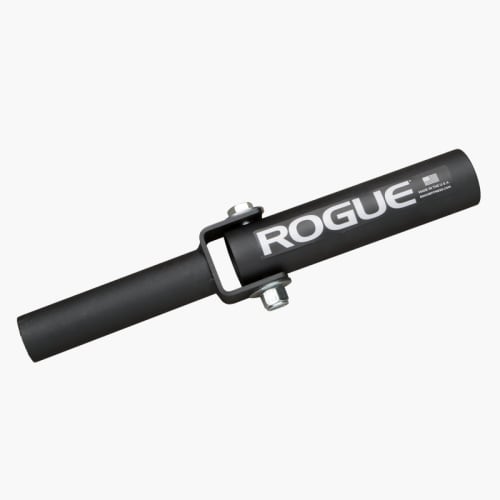Which is More Effective: Landmine Deadlift vs Regular Deadlift
The landmine has seen a huge rise in popularity over the last few years, this is great as it truly is a very effective piece of equipment. However there is a huge difference between the landmine variations of traditional strength movement and the traditional movements themselves (squats, deadlifts) that both coaches and practitioners should be away of when writing their training programmes. In this article I will outline both the similarities and differences between the landmine deadlift and the conventional deadlift.
Get weekly roundups of the best training tools in your inbox, every Monday.
No spam – just thoughtful training advice
- What Is The Landmine Deadlift
- What is the Regular Deadlift
- Equipment Required to Perform The Deadlift and Landmine Deadlift
- Similarities Between the Landmine Deadlift and Conventional Deadlift
- Hinge Movement
- Differences Between the Landmine Deadlift and Conventional Deadlift
- Target Population
- Technical Complexity
- Strength Training
- Mobility Requirements
- Other Factors To Consider
- Dealods
- Stepping Stone Lift
What Is The Landmine Deadlift
The landmine deadlift is a hinge movement that requires a barbell and a landmine. Just like the conventional deadlift it involves picking a weight from the floor in order to improve strength or gain muscle mass.
Buy Landmines ↗
What is the Regular Deadlift
The regular deadlift, or conventional deadlift is one of the most well known exercises in the weight room and for good reason. It involves simply picking the barbell from the floor to the hips. It is considered one of the most pure tests of full body strength.
Buy Barbells ↗
Equipment Required to Perform The Deadlift and Landmine Deadlift
Similarities Between the Landmine Deadlift and Conventional Deadlift
Hinge Movement
Both the landmine and the conventional deadlift move through the hinge movement patter. The hinge movement pattern involves a bend in the knees and “hinging” at the hip joint, keeping the back straight. There are two types of hinge movement, the straight leg deadlift and the conventional deadlift. During the straight leg deadlift the hips remain high and the weight doesn’t touch the floor, this is more of a hamstring and lower back isolation movement. Whereas the deadlift involves more knee flexion as the weight gets closer to the floor, both the variaitons being discusses in this article, the deadlift and the landmine deadlift are of the conventional variation.
Differences Between the Landmine Deadlift and Conventional Deadlift
Target Population
The landmine deadlift is only for beginners, it does not allow for high levels of strength training and therefore should not be used by intermediate or advanced trainees. It is a great way for beginners to take their first steps into deadlifting with slightly heavier weights than KB’s but once the weight gets to a certain amount the limiting factor becomes grip strength, making using a hex bar or a traditional barbell deadlift much more effective.
Technical Complexity
The conventional deadlift is more difficult to learn than than the landmine deadlift when it comes to skill acquisition. This is because the landmine doesn’t have to follow such a fixed path like in the conventional deadlift and also because the conventional deadlift requires the bar to be kept close to the body whereas the landline deadlift the bar doesn’t need to be navigated past the knees, making it easier to learn. This is another reason why beginner trainees can hugely benefit from using the landmine deadlift along with the KB deadlift. Once a beginner has mastered these more basic hinging variations and built some initial strength then they can consider transitioning to the regular deadlift.
Strength Training
People do not get really strong through doing the landmine deadlift. Firstly, it is impossible to load with heavy weights as you can only use one end of the barbell, secondly the limiting factor will almost always be grip strength and the style of grip doesn’t allow for the use of straps. For those who have good hinging technique and are looking to get very strong, use the conventional deadlift and not the landmine deadlift. I would recommend the landmine straight leg deadlift or single arm landmine deadlift for those who are looking to use the landmine to isolate the hamstrings as these two exercises are effective for those at all levels.
Mobility Requirements
The landmine deadlift does not require the hips to be as mobile as the regular deadlift. For beginners with poor mobility in the hips and the lower back, the conventional deadlift can be a very challenging position in terms of the mobility required to perform it correctly. Using a landmine deadlift makes finding the starting position easier on the hips as the starting position requires less mobility. This is another reason why beginners or those with poor mobility might consider using the landmine deadlift.
Other Factors To Consider
Dealods
Deloads are weeks of training when the stimulus is drastically lowered from traditional training weeks in order to let the body rest and recover. I personally enjoy using the landmine deadlift variation during deloads, it can be done with very light weights and is easy on the body. It can be a nice step back away from the intensity of the conventional deadlift.
Stepping Stone Lift
The landmine deadlift is a stepping stone towards both the conventional deadlift and the hex bar deadlift in my opinion. It is a great way for beginners to learn the hinge movement and pick up some light weights through this new movement pattern, but once technique is at a high quality and strength training starts, then the deadlift will be performed with the conventional deadlift and the hex bar deadlift and practically never the landmine deadlift.
If you enjoyed this resource you can find more below or try Programme, a fitness app that plans every workout for you – based on your progress, equipment and lifestyle.
This resource was written by Sean Klein. Sean Richard Klein has thousands of hours of coaching experience and a BSc in Sports Science with Management from Loughborough University. He owns a gym in Bayonne France, CrossFit Essor, which runs group classes and a Personal training studio.
Sean Klein



